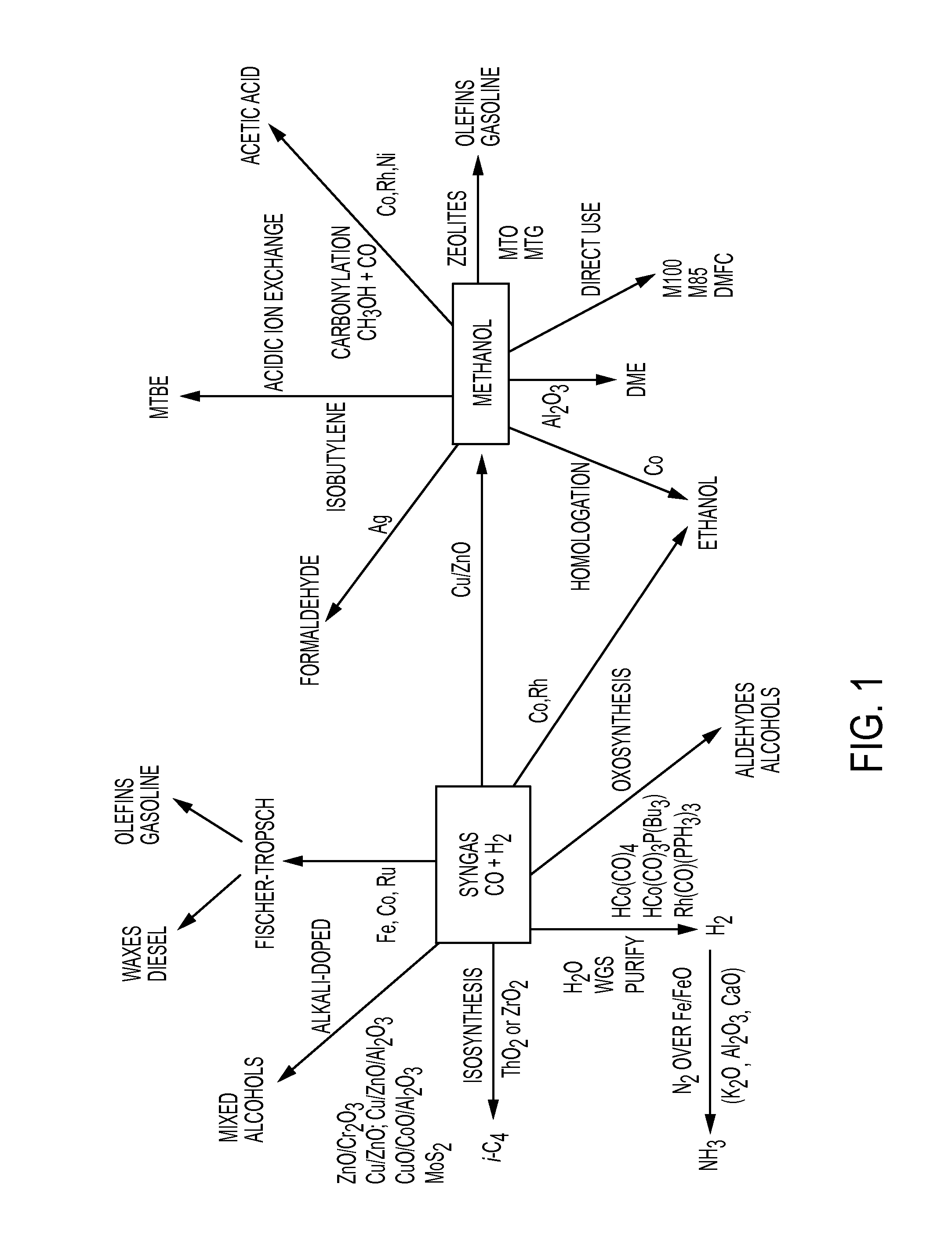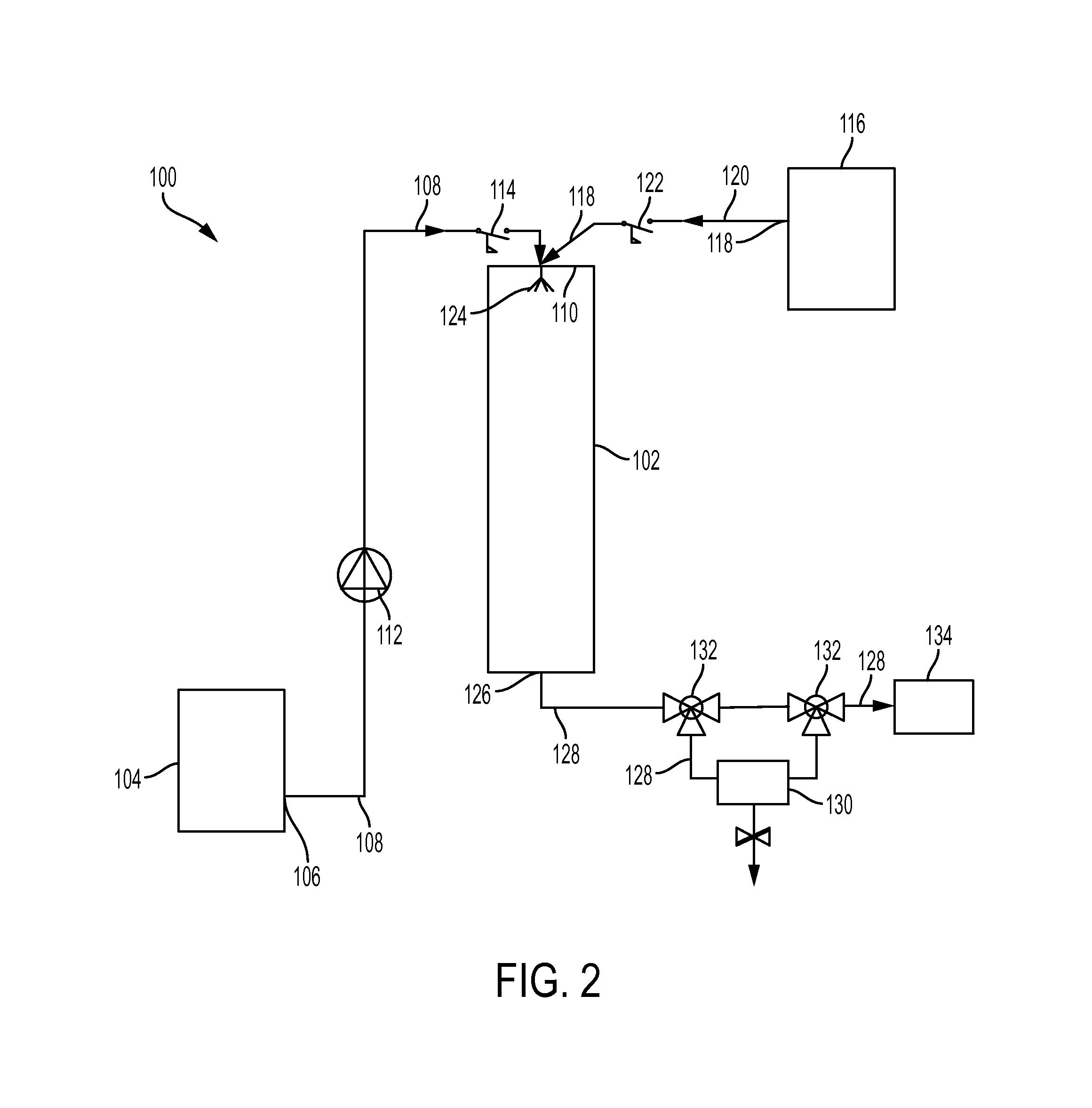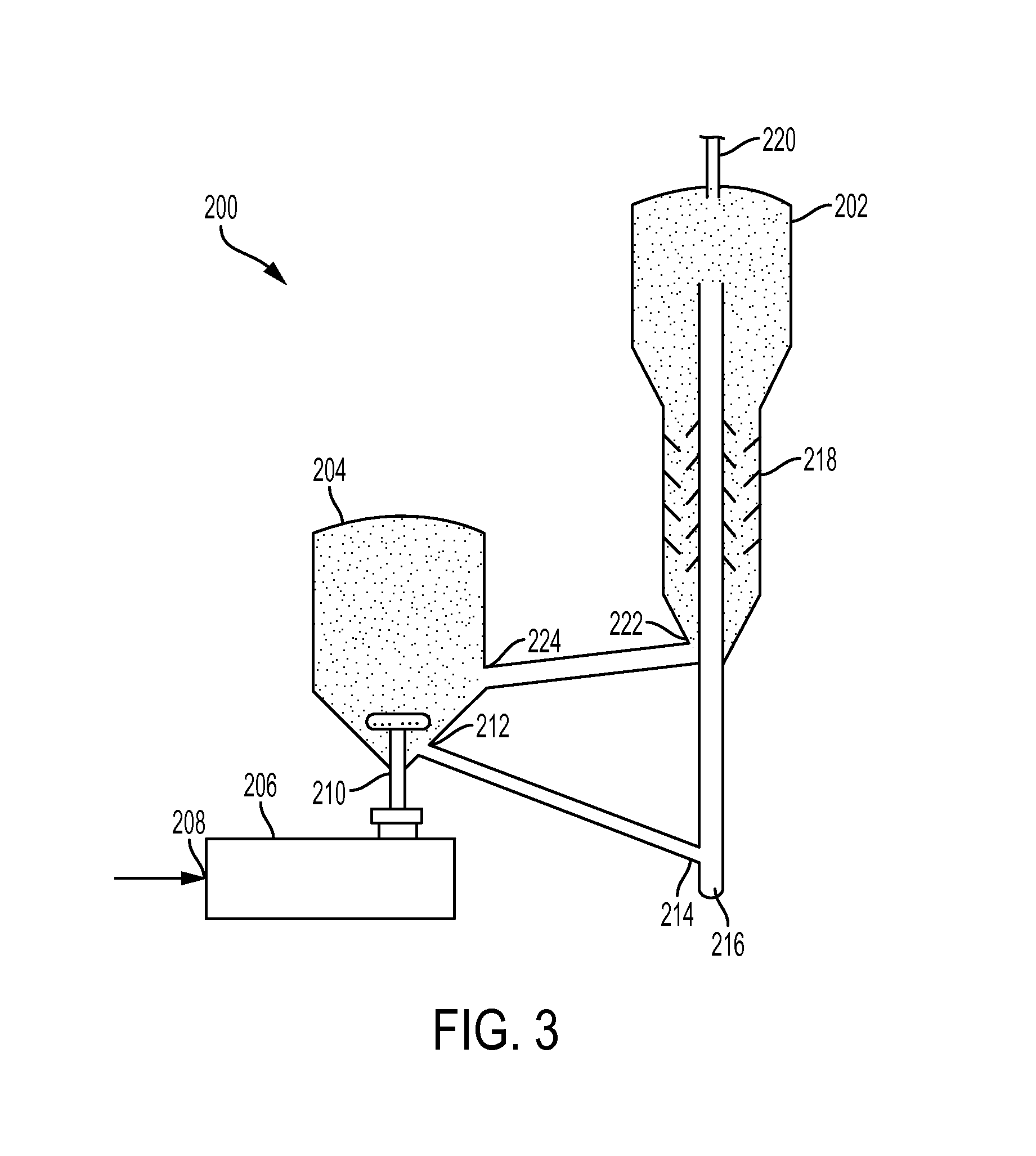Carbon monoxide production from carbon dioxide reduction by elemental sulfur
a technology of elemental sulfur and carbon monoxide, which is applied in the direction of carbon-sulfur compounds, other chemical processes, separation processes, etc., can solve the problems of low hydrogen availability of commercialization efforts for dry reforming of methane, low hydrogen availability of commercialization efforts, and high cost of hydrogen production and isolation
- Summary
- Abstract
- Description
- Claims
- Application Information
AI Technical Summary
Benefits of technology
Problems solved by technology
Method used
Image
Examples
example 1
Equilibrium Calculations of Reactions
[0083]Multiphase equilibrium composition calculation was done by using HSC Chemistry 7.1 software (Outotec Oyi, Espoo, Finland). The parameters used in the calculations were ratios of gaseous carbon dioxide to gaseous sulfur ranging from 6:1 to 1:1 at temperatures between 0-3000° C. FIGS. 6-9 are graphs of the calculated equilibrium composition obtained by treating different ratios of CO2 with gaseous S at temperatures from 0 and 3000° C. FIGS. 10-12 are graphs of the amount of different gaseous species at equilibrium conditions between four different feed ratios of CO2 / S were compared at three different temperatures. FIGS. 13-15 are bar graphs of various product ratios in the equilibrium reaction mixture at three different temperatures and four different feed compositions. FIG. 5 are plots of the equilibrium composition of different gaseous species with a feed composition of 1 kmol CO2 (g) and 1 kmol S(g). FIG. 7 are plots of the equilibrium com...
example 2
Production of CO and SO2 with Recycle of COS
[0086]General Procedure.
[0087]Experiments were conducted at 800° C. and 900° C. in a saturator reactor using MoS2 and ZnS catalysts to produce CO and SO2 with recycle COS to limit the further production of COS. A gaseous mixture of CO2 (25 ml / min) Ar (25 ml / min) was passed through the saturator reactor containing molten sulfur held at 180° C. The sulfur saturated gaseous CO2 and Ar mixture was passed over the MoS2 or ZnS catalyst (500 mg) held at 800° C. and 900° C. Both ZnS and MoS2 were procured from Sigma-Aldrich®, USA. Table 3 lists the physical and kinetic parameters of the catalysts and the reactions.
TABLE 3ParametersZnSMoS2Surface area (BET)20.7 m2 / g3.6 m2 / gPore volume (BJH)0.082 cm3 / g0.026 cm3 / gPore diameter(4V / A) (BJH)14.0 nm30.4 nmEa, kJ / mol27.530RCO2, mol / g.s (900° C.)5.63 × 10−7 5.43 × 10−7Ea = activation energy and Rco2 = rate of CO2 decomposition
[0088]MoS2 Catalyst.
[0089]In the saturation reactor, the temperature was raised t...
PUM
| Property | Measurement | Unit |
|---|---|---|
| reaction temperature | aaaaa | aaaaa |
| pressure | aaaaa | aaaaa |
| reaction temperature | aaaaa | aaaaa |
Abstract
Description
Claims
Application Information
 Login to View More
Login to View More - R&D
- Intellectual Property
- Life Sciences
- Materials
- Tech Scout
- Unparalleled Data Quality
- Higher Quality Content
- 60% Fewer Hallucinations
Browse by: Latest US Patents, China's latest patents, Technical Efficacy Thesaurus, Application Domain, Technology Topic, Popular Technical Reports.
© 2025 PatSnap. All rights reserved.Legal|Privacy policy|Modern Slavery Act Transparency Statement|Sitemap|About US| Contact US: help@patsnap.com



